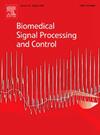一种基于空间注意网络的多尺度残差长短期记忆的脑卒中预测框架
IF 4.9
2区 医学
Q1 ENGINEERING, BIOMEDICAL
引用次数: 0
摘要
在发达国家;据报道,中风是导致死亡的第二大原因。快速的临床干预和检查对患者的生活质量有重要的影响,也可以防止梗塞的扩大。通过机械或药物干预,临床干预的重点是恢复灌注缺陷。无论采用哪种再灌注方式,临床医生都需要根据自己的临床经验和磁共振成像(MRI)扫描等多模态神经影像学检查来分析其优点和风险。这种决策操作可以从提供组织评估的自动最终梗死预测中得到改进。因此,在这项工作中,通过考虑深度学习方法,设计了一个独特的中风预测框架。首先,从公开可用的数据集中收集基本的MRI图像。因此,通过开发的自适应多路径细化网络(AMRN)将采集到的图像馈送到分割阶段。此外,采用美国统计斑马优化算法(Statistical American Zebra Optimization,简称SAZO)对网络参数进行调优,增强了模型的分割精度。然后,将分割后的图像进入特征提取阶段,利用图卷积神经网络(GCNN)从分割后的图像中提取深度特征、纹理特征和形态特征。然后,将提取的特征输入到设计的多尺度剩余长短期记忆空间注意网络(MResLSTM-SAN)中,用于脑卒中预测。最后,用一组经典模型验证了所推荐技术的结果。本文章由计算机程序翻译,如有差异,请以英文原文为准。
A novel MRI image-analyzed stroke prediction framework using multiscale residual long short-term memory with spatial attention network
In developed countries; stroke is reported as the second leading reason of mortality. The quick clinical intervention and examination have an important impact on the patient’s life quality and also prevent the growth of infarct. By performing mechanical or pharmaceutical interventions, the clinical interventions concentrate on restoring the perfusion deficits. The clinicians are required to analyze the merits and risks based on multimodal neuroimaging examinations including their own clinical experience and Magnetic Resonance Imaging (MRI) scans, regardless of which reperfusion are utilized. This decision-making operation could improve from an automatic final infarct prediction that would offer a tissue evaluation. Hence, in this work, a unique stroke prediction framework is designed by considering deep learning approaches. At first, an essential MRI images are gathered from publicly available datasets. Hence, the gathered images are fed to the segmentation phase by developed Adaptive Multi-path Refinement Networks (AMRN). Moreover, the segmentation accuracy of the model is strengthened by tuning network parameters using Statistical American Zebra Optimization (SAZO). Later, the segmented images are given into the stage of feature extraction to extract the deep features using Graph Convolutional Neural Network (GCNN), texture feature, and morphological feature from the segmented images. Further, the extracted features are given into the designed Multiscale Residual Long Short-Term Memory with Spatial Attention Network (MResLSTM-SAN) for predicting the stroke. Finally, the outcome of the recommended technique is validated with a set of classical models.
求助全文
通过发布文献求助,成功后即可免费获取论文全文。
去求助
来源期刊

Biomedical Signal Processing and Control
工程技术-工程:生物医学
CiteScore
9.80
自引率
13.70%
发文量
822
审稿时长
4 months
期刊介绍:
Biomedical Signal Processing and Control aims to provide a cross-disciplinary international forum for the interchange of information on research in the measurement and analysis of signals and images in clinical medicine and the biological sciences. Emphasis is placed on contributions dealing with the practical, applications-led research on the use of methods and devices in clinical diagnosis, patient monitoring and management.
Biomedical Signal Processing and Control reflects the main areas in which these methods are being used and developed at the interface of both engineering and clinical science. The scope of the journal is defined to include relevant review papers, technical notes, short communications and letters. Tutorial papers and special issues will also be published.
 求助内容:
求助内容: 应助结果提醒方式:
应助结果提醒方式:


